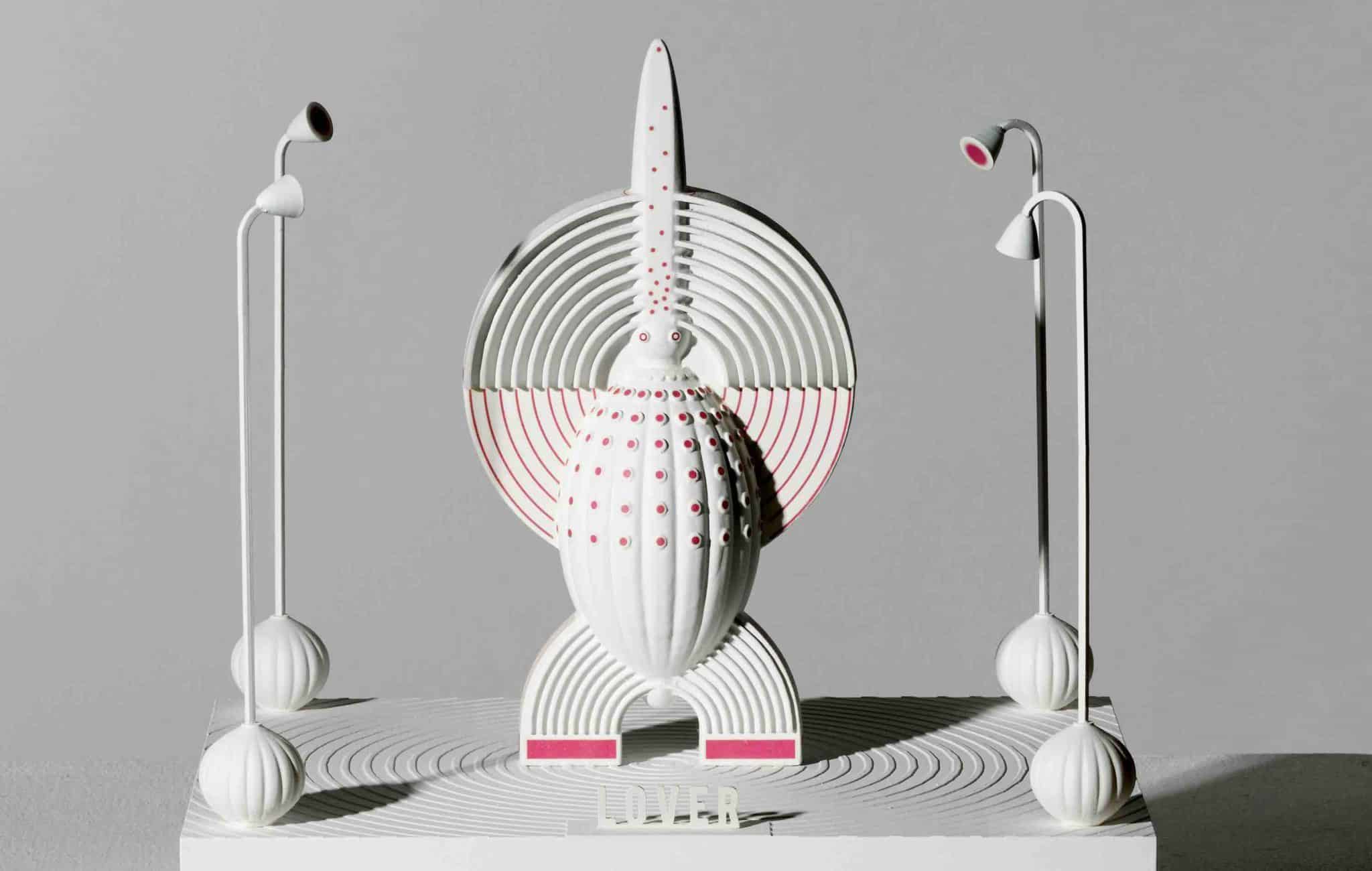Jo Fairfax, a contemporary artist – the son of a poet and dancer – has received much attention for his recent collection of 3D printed sculptures based on Carl Jung’s idea of the 12 archetypes. We thought it worthwhile to catch up with him to understand his thinking, process, and how 3D printing technology has elevated his practice.

He described his childhood to VoxelMatters as growing up ‘with virtually no money’, in rural Berkshire, in the UK – finding ways to keep himself busy during his simple, barebones upbringing. This came in the form of invention: “I loved inventing things, and when I was 10 years old I made an automatic mechanical curtain opener so that I could open my bedroom curtains without getting out of bed,” he said. “I wouldn’t change a thing.”
Considering this, it comes as no surprise that he found an affinity for the seemingly futuristic world of 3D printing.
“I always wanted to be an artist. My school careers advisory officer suggested that I might be best suited to canning peas in the local pea factory in Reading. I went to art school as soon as I could and immediately fell in love with sculpture. I loved the mystery, magic, and physicality of sculpture,” said Jo. “But when I came across holography I thought it was amazing that I could potentially create sculptures in light that required no support or suspension and you could see through the surface to the interior structure. I studied holography at the Royal College of Art, London. This was a game changer for me as I made sculptural holograms, not just flat holograms with the perception of three dimensions.”
Jo was then awarded a scholarship to study holographic film at the HoloCentre, in New York, where he made objects in the form of animation that seemingly came alive as one moved from left to right. Later, he would be awarded a NESTA Fellowship (National Endowment for Science, Technology, and Art) to develop his holographic work into virtual reality.

“I loved the 3D animated space and wanted to be inside it,” he said. However, “whilst I loved the magic of the virtual reality technology I felt that losing the physicality of sculpture was too big a price to pay on an emotional level. I think that it is primal for humans to experience the physical world. To look at something physical. Not an illusion but an equal to the viewer in physical terms, the same language.”
Jo wanted to combine the physicality of sculpture with the magic of technology, and retain the human experience. At this stage of his career, he was making a living as an artist creating sculptural lighting works in the public realm, as well as interactive, kinetic sculptures with Arduino. Around this time, he became increasingly aware of 3D printing technology, and described it as being “like hearing about magic.”

“I thought that it would never be possible for me to use 3D printers, that it would be way too complicated and expensive for me. So I viewed the evolving 3D printing world as a child views a magical display of multi-colored sweets from outside of a sweetshop, looking in. I always loved sculpture but I could never make what was really in my head and heart. I couldn’t make the fineness, the detail, the sense of fragility and lightness, almost like creating the manifestation of a dream,” he said.
Luckily for Jo, in 2021, desktop 3D printing had reached scales of mass adoption, and the cost barrier to entry was relatively low. So, and dived right in with YouTube videos and a lot of trial-and-error. “, as a creative tool, a means to express what is in my head. I still wanted to create artworks that had that sense of being human, of emanating a human spirit,” he said. “I love 3D printing so much that I bought another one, and my partner bought me two Ender 3 S1 Pros to help with the sculpture production speed.”
After designing the files in Blender and Tinkercad, slicing in the files in Ultimaker Cura and Creality Slicer, and printing the pieces in a 1.75mm white PLA filament, the ‘kit’ (all the separate puzzle pieces – between 4 to 12) are assembled by hand. Each component is hand-fettled using needle files, sandpaper, a scalpel, and a mini dremel. These pieces are then glued using Gorilla Super Glue Gel (the gel gives Jo a window of time to adjust the location of the pieces). The joints are filled with filler, then filed and sanded, after which the sculpture is sprayed with putty (between 1 and 4 times) to get the right surface. The sculpture is then finished with two coats of white, and two coats of the chosen color. To finish it all off, “I design decals in Photoshop and Adobe Illustrator, print these out, and spray varnish them. I then cut the images out, and soak and separate each decal before adhering them to the sculpture using Decal Fix. Finally, I spray the entire sculpture with two layers of Briwax.”
“3D printing has totally changed my work (and the world)! I remember reading an article about 3D printing an organ and another one on 3D printing a footbridge. I realized that life had changed. There are certain technological advances that draw a line in the sand where one can say that life changed at that point, like man-powered flight. 3D printing is one of those lines in the sand,” concluded Jo Fairfax. “My mind is blown away by the engineering, architectural, and medical changes that are taking place right now. I love seeing and thinking about the probable effects digital fabrication will have on our environment in the future. 3D printing gives me hope – hope for a bright and beautiful future. It is unbelievably exciting.”
